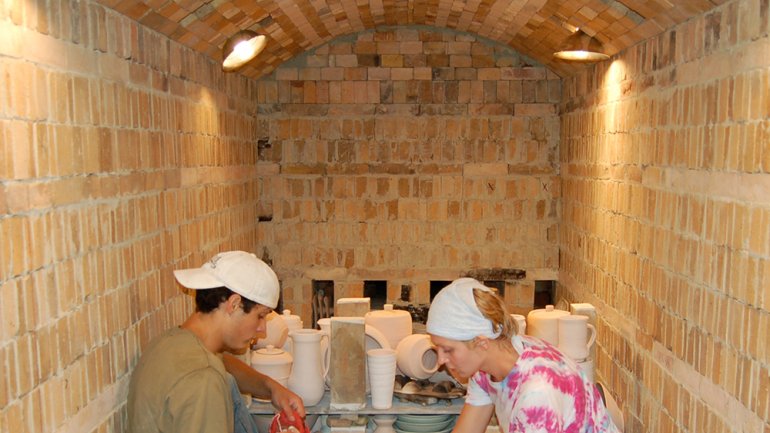A Potter's Journey: Part Two
Art Experiences Outside the College Classroom
"I don't think that academia has everything 100 percent right, and I don't think that apprenticeship systems are modern... in my head I'm trying to figure out the hybrid." ~ Ben Carter, Tales of a Red Clay Rambler (podcast), 2014
Mentorship under two influential potters is a key reason that I've been able to create a life in clay. During my freshman year of college in 2006, I met professor Sam Johnson. He got me a job in the ceramics studio and an off-campus internship with local potter, JD Jorgenson. Years ago, Sam and JD had apprenticeships with master potter Richard Bresnahan at the St. John's Pottery, where they consistently worked about 80 hours per week for years. My goal as an undergrad art major at the College of St. Benedict/St. John's University was to spend enough time immersed in pottery making that it would be comparable to the time that would be spent in a pottery apprenticeship.
JD taught me for two years during off-campus internships at his studio, where we built and fired a 30-foot-long, three chambered, wood-burning kiln. Meanwhile, Sam paid me for four years of work-study at college, where I learned clay mixing, ash glaze chemistry, and gas kiln firing.
The summer after my sophomore year, I got a job at the St. John's Woodshop. My boss, Brother Christopher, generously gave me 50 planks of flawed lumber at no cost. After an eight-hour workday he would leave and say, "Ok don't cut your hand off!" I stayed three hours late for more than a month to create a stackable shelf system. That fall, I used the shelving for my first pottery exhibition in the student gallery. It resulted in more than $1,000 in pottery sales, a solo exhibition on my résumé, and images that helped me to start a website.
I also used the shelving as ware boards to create thousands of pieces of pottery. The portable, durable system then doubled as display shelving. I would set up my equipment next to the college bus stop to perform pottery throwing demonstrations and sell pottery, and I averaged almost $1,000 in sales each time.
During my junior year, I flew to Flagstaff, Arizona, for a workshop called "Potters as Sculptors, Sculptors as Potters." Don Reitz, Christa Assad, Eva Kwong, and Brad Schweiger demonstrated on pottery wheels, and it rocked my world. Reitz went through two wheelbarrows of clay in two days! A college research travel grant funded $500 of the trip, and the art club funded the workshop fee. This powerful experience inspired me to create a 1,000-plus-piece abstract sculpture installation for my second solo exhibition in the student gallery.
In my senior year, the college paid to fly a group of us to Philadelphia for the National Council on Education for the Ceramic Arts (NCECA) conference. Danny Meisinger performed on the pottery wheel, building an 8.5-foot-tall sculpture, and I held a Peter Voulkos platter that was easily worth five figures. NCECA blew me away because it was a place where academia and real world ceramics mixed and blossomed.
You’ll notice that none of these activities were part of the regular art major curriculum. They were made possible by me actively trying to immerse every part of my life in clay – akin to an apprenticeship system. Japanese potter Shoji Hamada represents a historically important example of how to create a system that aligns life with craft. In the exhibition catalog for “Three Generations of Hamada Potters, Andrew L. Maske wrote, “…it is obvious that Shoji approached his life and work in a holistic manner, and that his workshop, house, clothes, and lifestyle were all related to his greater motivation for working in clay.”
Experiences outside of the college classroom bring real-world perspective to the college curriculum. They can often be conducted at a low cost, and sometimes they even return a profit. The key is working long hours and sacrificing time after the regular workday ends.




